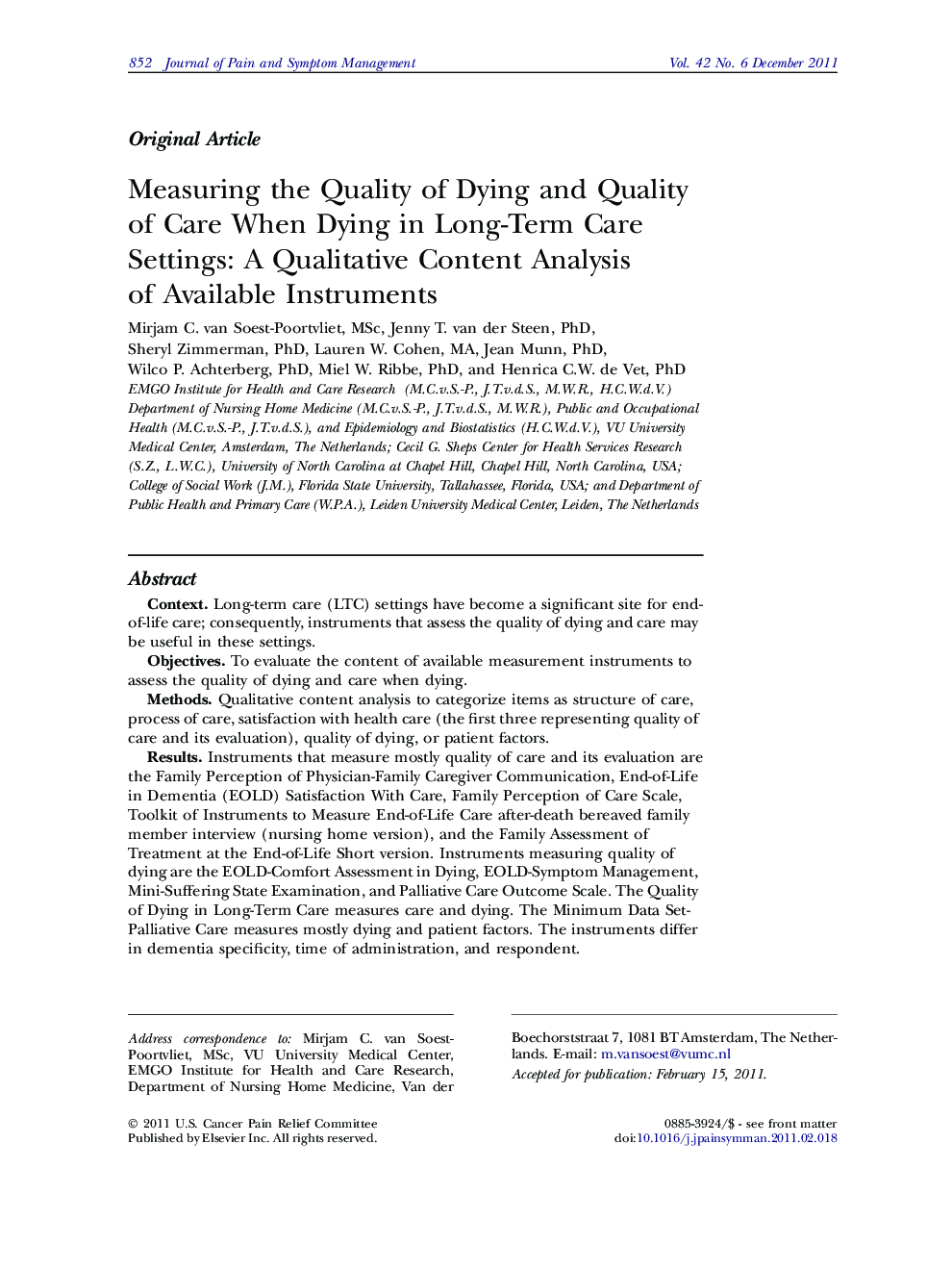| Article ID | Journal | Published Year | Pages | File Type |
|---|---|---|---|---|
| 2730165 | Journal of Pain and Symptom Management | 2011 | 12 Pages |
ContextLong-term care (LTC) settings have become a significant site for end-of-life care; consequently, instruments that assess the quality of dying and care may be useful in these settings.ObjectivesTo evaluate the content of available measurement instruments to assess the quality of dying and care when dying.MethodsQualitative content analysis to categorize items as structure of care, process of care, satisfaction with health care (the first three representing quality of care and its evaluation), quality of dying, or patient factors.ResultsInstruments that measure mostly quality of care and its evaluation are the Family Perception of Physician-Family Caregiver Communication, End-of-Life in Dementia (EOLD) Satisfaction With Care, Family Perception of Care Scale, Toolkit of Instruments to Measure End-of-Life Care after-death bereaved family member interview (nursing home version), and the Family Assessment of Treatment at the End-of-Life Short version. Instruments measuring quality of dying are the EOLD-Comfort Assessment in Dying, EOLD-Symptom Management, Mini-Suffering State Examination, and Palliative Care Outcome Scale. The Quality of Dying in Long-Term Care measures care and dying. The Minimum Data Set-Palliative Care measures mostly dying and patient factors. The instruments differ in dementia specificity, time of administration, and respondent.ConclusionInstruments that assess quality when dying differ in several ways and most do not measure a single construct, which is relevant to guiding and evaluating care. Comparing psychometric properties and usefulness of instruments that measure similar constructs is the next step in determining which are best suited for use in LTC.
